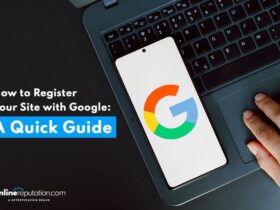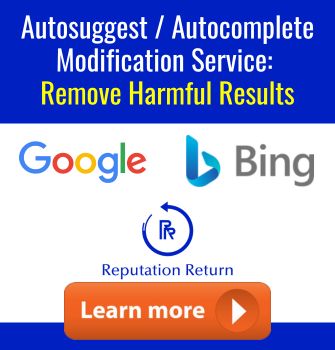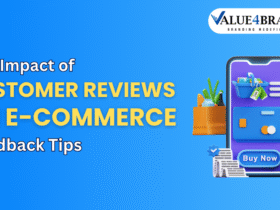In the ever-evolving landscape of search engine optimization (SEO), understanding and optimizing for Google’s People Also Ask (PAA) results has become a critical strategy for businesses and individuals alike. The PAA feature, which appears as a series of questions and answers related to a user’s search query, offers a unique opportunity to enhance your online visibility and authority.
Reputation Return specializes in helping you navigate and optimize these PAA results, ensuring your brand is represented accurately and positively. By leveraging our expertise, you can influence the information that appears in the PAA box, protecting and restoring your online reputation effectively.
Optimizing for PAA involves more than just understanding keywords; it requires a deep insight into user intent and behavior. The PAA box dynamically expands with related questions, providing users with a wealth of information directly on the search engine results page (SERP). This feature not only enhances user experience but also presents a chance for your content to shine.
Throughout this guide, we will explore actionable strategies to improve your PAA performance, from crafting concise answers to leveraging FAQ schema. Whether you’re looking to boost your brand’s visibility or simply understand how PAA works, this guide will provide the insights you need to succeed in the competitive digital landscape.
Key Takeaways
- Understanding and optimizing PAA results can significantly enhance your SEO performance.
- Reputation Return offers tailored solutions to influence and improve your PAA presence.
- Clear, direct answers and well-structured content are essential for PAA success.
- PAA optimization can increase your website’s visibility and authority in search engines.
- Quality content and user intent alignment are key to achieving better search result performance.
Understanding Google’s People Also Ask Feature
Google’s People Also Ask (PAA) feature is a dynamic and interactive element in search engine results pages (SERPs) that provides users with additional questions and answers related to their search query. This feature enhances the search experience by offering more context and insights without requiring users to refine their search terms.
How the PAA Feature Works
The PAA feature operates by leveraging machine learning to analyze past search behavior and identify patterns in user queries. It dynamically generates questions and answers based on the content available on the web, ensuring that the information presented is relevant and up-to-date. The feature is triggered by question-based searches, such as “how” and “what” queries, which signal to Google that the user is seeking detailed information on a topic.
Its Role in Enhancing Search Experience
By presenting related questions and answers, the PAA feature streamlines the search process, allowing users to explore topics more deeply without leaving the search results page. This not only improves user satisfaction but also increases engagement, as users can find additional information quickly and efficiently.
| Feature | PAA | Traditional SEO |
|---|---|---|
| Content Structure | Requires concise, structured answers | Focuses on broader content optimization |
| User Engagement | Interactive Q&A format | Passive content consumption |
| Visibility | Appears prominently in SERPs | Dependent on keyword ranking |
| Content Strategy | Benefits from FAQ schema and clear headers | Relies on comprehensive content |
Reputation Return specializes in refining your content to align with the PAA feature’s requirements, ensuring that your brand is represented accurately and effectively. By optimizing for PAA, businesses can enhance their online visibility and provide users with the information they need in a clear and concise manner.
For more insights on how to improve your online presence, visit our guide on 10 Questions to Ask Your Reputation Management.
Impact of PAA on Online Visibility and Traffic
Optimizing for Google’s People Also Ask (PAA) feature can significantly enhance your brand’s online presence and drive quality organic traffic. By strategically refining your content to align with PAA queries, you can occupy more valuable real estate on search engine results pages (SERPs), boosting both visibility and credibility.
Boosting Brand Awareness through PAA
- A featured PAA snippet can drastically improve brand visibility, making your content more accessible to a wider audience.
- There’s a direct correlation between PAA appearances and increased organic traffic, as users are more likely to engage with content that directly answers their queries.
- Well-optimized PAA content builds trust and credibility, as it provides users with clear and concise answers to their questions.

For instance, studies show that content featured in PAA boxes can increase website traffic by up to 396%, as seen in the case of Happy Ears Hearing. By securing a spot in the PAA box, businesses can enhance their online reputation and attract more visitors. Reputation Return specializes in refining your content structure to secure these prominent positions, ensuring your brand stands out in competitive search landscapes.
Occupying more SERP real estate through PAA not only improves brand visibility but also reinforces your authority in your niche. With Reputation Return’s expertise, you can harness the power of PAA to drive measurable impacts on traffic and overall brand exposure, ensuring your business thrives in the digital space.
Best Practices for editing PAA results
Optimizing your content for Google’s People Also Ask (PAA) feature requires a strategic approach. By following these best practices, you can enhance your brand’s online presence and improve your content’s performance. Reputation Return is here to guide you through these practices, ensuring your brand is represented accurately and effectively.
Crafting Concise and Direct Answers
Google’s PAA feature favors concise answers, typically around 40 words. This brevity ensures quick, informative responses for users. To align with this format, focus on eliminating filler language and providing factual, targeted answers. Concise content not only meets PAA’s requirements but also improves user engagement.
Using Question-Based Headers Effectively
Using question-based headers can naturally incorporate long-tail keywords, making your content more discoverable. For example, structuring headers like “What is SEO?” or “How Does Google’s PAA Work?” can help your content appear in the PAA box. This approach aligns with user intent and increases your chances of being featured in the PAA section.
Implementing FAQ Schema Markup
FAQ schema markup is crucial for PAA optimization. It signals to search engines that your content is structured as Q&A, making it easier for Google to identify and feature your answers in the PAA box. This markup enhances visibility and can lead to improved rankings in the PAA section.
Utilizing Tools for Keyword Insights
Tools like SEMrush’s Keyword Magic Tool can provide valuable insights into low-difficulty keywords. By identifying these keywords, you can refine your content to better align with user queries, increasing your chances of appearing in the PAA section.
| Best Practice | Details |
|---|---|
| Crafting Concise Answers | Keep answers around 40 words for clarity and brevity. |
| Using Question-Based Headers | Incorporate long-tail keywords naturally in headers. |
| FAQ Schema Markup | Enhances content visibility and PAA rankings. |
| Keyword Research | Identify low-difficulty keywords for better alignment. |
By implementing these strategies, you can protect your online image and improve your content’s performance in the PAA section. Let Reputation Return help you achieve these goals with expert guidance and support.
Leveraging Tools and Schema for PAA Optimization
Optimizing for Google’s People Also Ask (PAA) feature requires more than just understanding keywords—it demands the right tools and strategies. By leveraging specialized tools and structured data, you can enhance your content’s visibility and performance in search results.
Utilizing PAA Scraper Tools for Keyword Insights
Tools like Surfer and AnswerThePublic are invaluable for uncovering related questions and long-tail keywords. These insights help you craft content that directly addresses user queries, increasing your chances of appearing in the PAA box.
Implementing FAQ Schema Markup to Enhance Visibility
FAQ schema markup signals to search engines that your content is structured as Q&A, making it easier for Google to feature your answers. This markup can significantly boost your visibility in the PAA section.
Monitoring and Analyzing SERP Performance
Regularly monitoring your SERP performance helps you refine your strategy. Tools like SEMrush provide insights into how your content is performing, allowing you to make data-driven adjustments and improve your PAA presence.

Reputation Return offers expert guidance and a free confidential consultation to help you set up these optimizations. By combining cutting-edge tools with strategic schema implementation, you can secure a prominent spot in the PAA box and drive measurable results for your brand.
Creating Comprehensive Content for PAA Success
Developing detailed, reader-friendly content is crucial for succeeding with Google’s People Also Ask (PAA) feature. At Reputation Return, we specialize in crafting content that not only aligns with user intent but also enhances your online visibility.
Incorporating Related Questions and Secondary Keywords
To create effective PAA-focused content, start by identifying related questions from PAA research. These questions often reveal user intent and can guide your content strategy. For example, if a PAA box includes questions like “What is SEO?” or “How does Google rank websites?”
Integrate secondary keywords naturally to enhance SEO without overstuffing. This approach ensures your content remains relevant and engaging. For instance, using long-tail keywords like “how to improve SEO rankings” can attract more specific queries.
Structuring Content for Readability and User Intent
Structure your content for readability by using short paragraphs, headers, and bullet lists. This format makes information easily digestible. For example:
- Use headers to break down topics clearly.
- Employ bullet points for lists or steps.
- Keep paragraphs concise to maintain reader engagement.
Matching user intent is key. Address both primary and related queries to cover all aspects of a topic. This comprehensive approach ensures your content meets user needs and improves its chances of appearing in the PAA box.
For example, a study by SEMrush found that longer articles (up to 2000 words) tend to yield more effective PAA answers. Comprehensive content that includes natural language, related questions, and careful layout outperforms shorter posts.
Reputation Return assists clients in updating and repurposing content efficiently, ensuring it remains optimized and relevant. This process involves refreshing older pages to reflect current trends and adapting content to shifting user queries.
| Content Strategy | Details |
|---|---|
| Identify Related Questions | Use PAA research to uncover user intent and guide content creation. |
| Integrate Secondary Keywords | Naturally incorporate long-tail keywords to enhance SEO without overstuffing. |
| Structure for Readability | Use short paragraphs, headers, and bullet lists to improve engagement and digestibility. |
| Match User Intent | Address both primary and related queries to comprehensively cover topics. |
| Balance Depth and Digestibility | Ensure content is thorough yet easy to read, balancing detail with clarity. |
By following these strategies, you can create content that not only ranks well but also resonates with your audience. Reputation Return is here to help you achieve this balance, ensuring your content is both optimized and engaging.
For more insights on improving your online presence, visit our guide on 10 Questions to Ask Your Reputation Management Company.
Updating and Repurposing Content Using PAA Insights
Staying relevant in today’s fast-paced digital world requires more than just creating new content—it demands refreshing and repurposing existing material to align with current trends and user needs. At Reputation Return, we specialize in guiding businesses through this process, ensuring their online presence remains strong and up-to-date.
Refreshing Older Pages for Current Trends
Older content can regain its vibrancy by incorporating insights from the People Also Ask (PAA) feature. For instance, if the PAA box for “SEO tips” now includes questions like “What is voice search optimization?” or “How does AI impact SEO?”, updating your older SEO guides to address these topics can revive their relevance. This approach not only boosts your content’s visibility but also ensures it meets the evolving needs of your audience.
Adapting Content to Shifting User Queries
Google’s PAA insights reveal new questions and topics that can breathe fresh life into legacy pages. By identifying these emerging queries, you can strategically repurpose your content to better align with what users are asking. For example, if the PAA box for “digital marketing” now includes questions about “AI in marketing” or “privacy concerns in data collection,” updating your content to cover these areas can make it more discoverable and engaging.
| Content Strategy | Details |
|---|---|
| Refreshing Older Content | Update legacy pages with current trends and user queries revealed by PAA insights. |
| Aligning with User Intent | Repurpose content to match shifting user questions and search intent. |
| Improving SEO | Enhance overall website SEO by maintaining accurate and relevant content. |
| Expert Guidance | Reputation Return offers expert support in identifying and implementing these updates. |
By systematically updating and repurposing your content with PAA insights, you can ensure your brand stays relevant, maintains strong SEO performance, and continues to meet the needs of your audience. Let Reputation Return guide you in this process, helping you achieve a powerful online presence that drives real results.
Conclusion
In today’s competitive digital landscape, mastering Google’s People Also Ask feature is essential for enhancing your online presence. By following the strategies outlined in this guide, you can optimize your PAA results, driving more traffic and building trust with your audience.
Key steps include understanding user intent, leveraging tools, and creating comprehensive content. Updating legacy pages and using FAQ schema can further boost your visibility. These efforts can increase your website traffic by up to 396% and improve your brand’s credibility.
Remember, a well-optimized PAA strategy is a powerful tool in modern SEO. It not only enhances your online reputation but also ensures your content meets the evolving needs of your audience. For personalized guidance, consider a free confidential consultation with Reputation Return.
Stay ahead in the dynamic world of search trends with continuous improvement. Let Reputation Return help you achieve a strong online presence that drives real results.
FAQ
What is the best way to optimize for Google’s People Also Ask feature?
To optimize for Google’s People Also Ask feature, focus on creating content that directly answers related questions, use FAQ schema markup, and ensure your content is concise and informative. This can help improve your visibility in search results.
How do I identify relevant keywords using People Also Ask questions?
Analyze the questions appearing in the People Also Ask boxes related to your topic. These can provide valuable keyword insights and help you address user intent more effectively in your content.
Can I influence the questions that appear in the People Also Ask section?
While you can’t directly control the questions, creating comprehensive and SEO-optimized content around your topic can increase the chances of your content being featured in the People Also Ask section.
What role does schema markup play in People Also Ask optimization?
Implementing FAQ schema markup on your website can help search engines understand your content structure better, potentially increasing your chances of appearing in the People Also Ask feature.
How often should I update my content to align with People Also Ask insights?
Regularly updating your content to reflect current trends and user queries can help maintain relevance and improve your chances of appearing in the People Also Ask feature.
Are People Also Ask boxes beneficial for SEO?
Yes, appearing in People Also Ask boxes can enhance your online visibility, drive more traffic to your site, and improve your brand’s authority on a topic.















